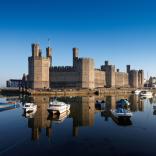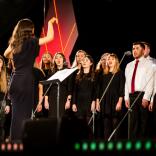Wales.com is a website that aims to promote Wales to the world. We think Wales is a great place to live, study, work and do business and the Wales.com website and associated social media is used to show the world what we can offer.
All features need to work as editorial articles, not sterile brochure copy. Although we want to get quite a lot of information in each one, it’s not a tick-box exercise – it has to stand up on its own merits as a compelling and readable story.
Who are we speaking to?
We have lots of different audiences – tourists, businesses, investors, students, press. They all need to know different things and expect to be spoken to in different ways. But they should always be able to tell it’s us.
Wales.com is primarily for an audience that isn’t familiar with Wales, or may never even have heard of it. It’s someone from France watching Gareth Bale score a goal who Googles where he’s from; it’s someone in Spain whose teenager is expressing an interest in university overseas: it’s someone looking to expand their business overseas; it’s someone from the US who has Welsh ancestry and is interested; it’s a child doing a school project.
Think about the person you’re writing for. What do they need to know? What do you want them to think, feel, and do? Read your writing back while imagining you’re them.
Language variant sites of Wales.com
There are six language versions of the UK English Wales.com site - US English, Welsh, French, German, Spanish and a limited amount of content on the Japanese version of the site.
For the international audience of Wales.com English may not be their first language. Use of unnecessary abbreviations, colloquialisms, irony, alliteration and plays on words in titles, description and body copy can be completely missed, or misinterpreted, so should be avoided or kept to a minimum in content written in English for Wales.com.
Articles can be localised in the translation process to better suit the in-market audience but it's worth considering if this risks losing the meaning/emphasis you are trying to convey. Could the original just be clearer?
Some articles may need to be written differently for the Welsh language version of the site - it wouldn't be appropriate to translate the English article about the Welsh language, or the meanings of Welsh place names into Welsh for a user whose first language is Welsh. Content may need to be modified for specific markets - for example, alternative words/terms such as fall instead of autumn may be used for the American market.
Storytelling
Our aim is to create engaging content that inspires and informs audiences, encouraging them to consider Wales and choose it as an attractive, viable destination for visits, investment, study or life.
We want our websites to use powerful storytelling that reflects a modern nation, told in voices that are unmistakably Wales; or by those who have experienced a particular aspect of Welsh life. They should be a source of stories that can be used across multiple activities including social and third-party platforms.
The main bulk of the website content should be evergreen (either never need updating, or need updating very rarely). Each article commissioned for/published on Wales.com should be identified as belonging to one of our editorial strands.
When creating editorial content for Wales.com, please also refer to our guidance on working with the Wales.com editorial strands.
Wales.com tone of voice
Our voice is an important part of our brand. It shows the world who we are, through how we speak and write. And, it’s usually the first part of our brand people will come across – so it’s important we get it right and make a good first impression.
Wales.com is the ‘parent' of the Wales Gateway website portfolio, with a remit to reach a broader audience of users with little knowledge of Wales and for whom English may not be their first language. Editorial content provides a high-level overview and should aim to direct users to other Welsh Government and relevant websites with more and in-depth, detailed content, such as Visit Wales, Trade and Invest Wales, Creative Wales and Study in Wales.
As Wales.com content is more informative and of a factual basis, it requires a more formal tone of voice than VisitWales.com. It should still be authentically personal but also authoritative: this is material that carries Wales’ branding. We’re looking for something like the tone and register of a good feature in a broadsheet colour supplement such as G2.
We should generally use one of three voices in Wales.com features:
- Wales. These are the features written in our own editorial voice. The tone of voice should be warm, informal and conversational as well as authoritative. These pieces are the clearest projection of the Wales brand, and writers should be careful to observe the agreed brand guidelines and values. The actual writer will not normally be identified or by-lined, and there should be no personal intrusions into the copy. For example
- anecdotes or recollections – “it reminded me of a visit to Portmeirion...”;
- subjective judgments that are clearly the writer’s own – “it’s the best album by a Welsh artist in 20 years...”;
- first-person pronouns except for “we” in the sense of “people in Wales”).
- Interviewee. In these features, the person featured will be left to tell the story. Depending on strand and format, the voice of the interviewer will be unobtrusive or wholly absent.
- Guest writer/contributor. These are features credited to someone we have chosen for their knowledge, first-hand expertise or life experience. They may be written by the guest contributor, or ghost-written on their behalf by a journalist. In all cases, the authorial voice will be identified at the start of the article with a short description of who they are and what they’ve done in or for Wales.
There should be a balance of features in the Wales and third party voice. The Wales voice allows us to provide a neutral view from Wales. Bringing in other voices enables us to deploy specialist knowledge as required, or provide more subjective personal thinking and different perspectives of Wales, allowing us to “show, not tell”.
Here are some points of guidance on the appropriate use of the three voices:
- When using the Wales voice, don’t be afraid to “own” our statements. Even though we are writing impersonally, we can sometimes use “our” and “we” as well as the third person when speaking of Wales. So in place of “Wales has many castles...”, we can say “In Wales, we have many castles...” if it's more appropriate to the context.
- Let guest writers’ and interviewees’ personality shine through. Personal anecdotes, localisations and Welsh language regional differences are to be welcomed. We shouldn’t seek to bleach their tone of voice in the edit so that it becomes too corporate-sounding but if required items should be clarified.
- However, guest contributions must be accurate. Although we can allow other contributors a large degree of latitude when it comes to tone, we should still ensure that they are factually sound. We should also ensure that we don’t let through material that pulls against our core objectives, or reflects poorly on Wales.
Tone and style checklist
If you have to remember just five things about how to write for Wales, make it these:
- Show what you know about Wales. Our history,our industry, our opportunity.
- Write simply and warmly. We’re confident enough to cut the hyperbole and fluff and let our personality shine through.
- Read your writing out loud. If it doesn’t sound right,get that red pen out and try again.
- Show what you love about Wales. What makes it great? Then back it up.
- KISS (keep it short and simple)
We’re aiming for clear, concise, friendly prose. Make sure you edit – cut words you don’t need. We’re aiming for simplicity.
Keep it short. With an increasing number of users primarily accessing our content on mobile devices, it's important to consider scroll depth. Content longer than 600-800 plus images, creates a long page and demands a longer attention span than users have, or are prepared to give, while browsing on mobile devices.
Particularly for international audiences, the simpler your text, the better. This means an average sentence length of around 12 words, but of course, you should mix this up a bit. Please try not to include too many complex clauses or super-long words.



